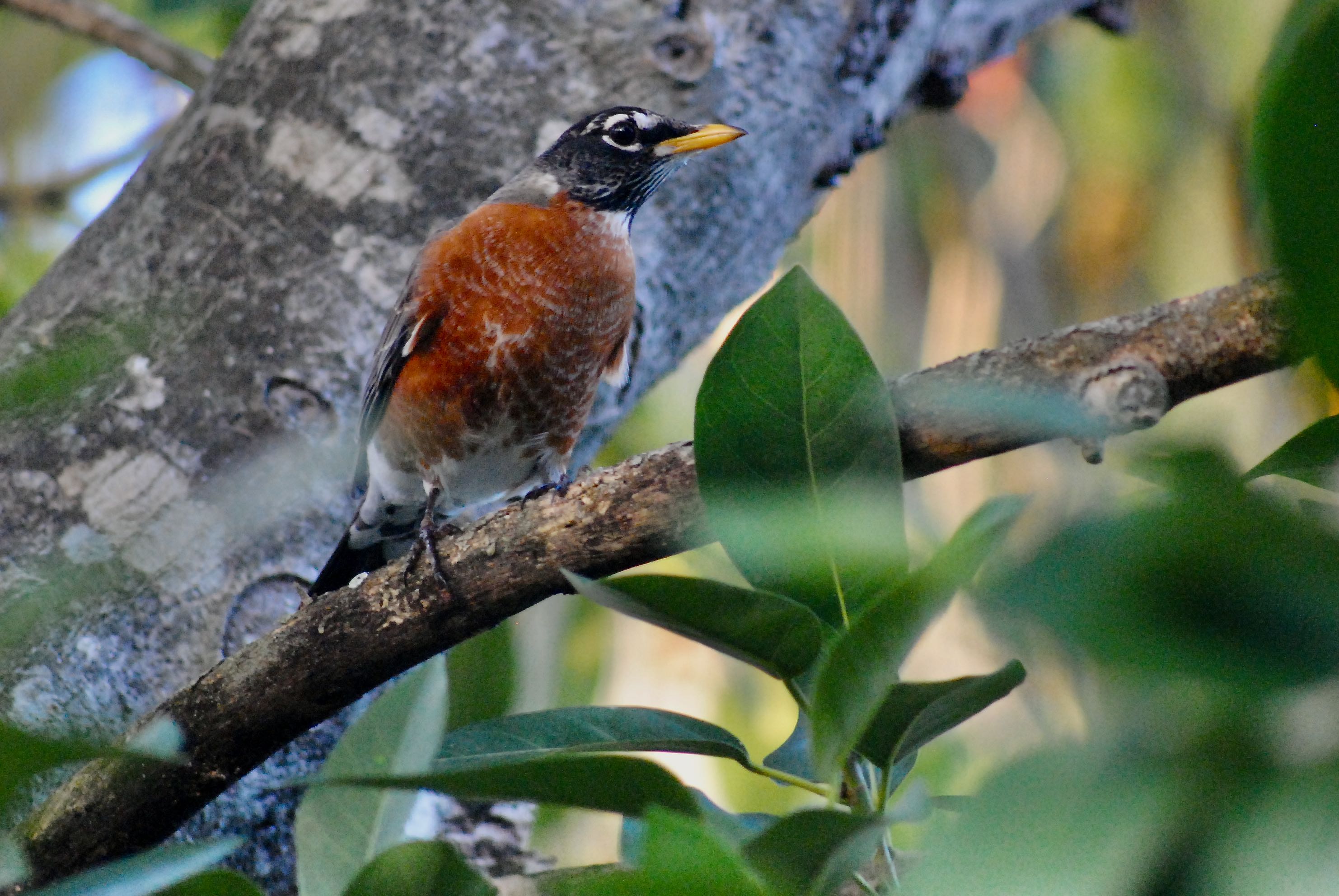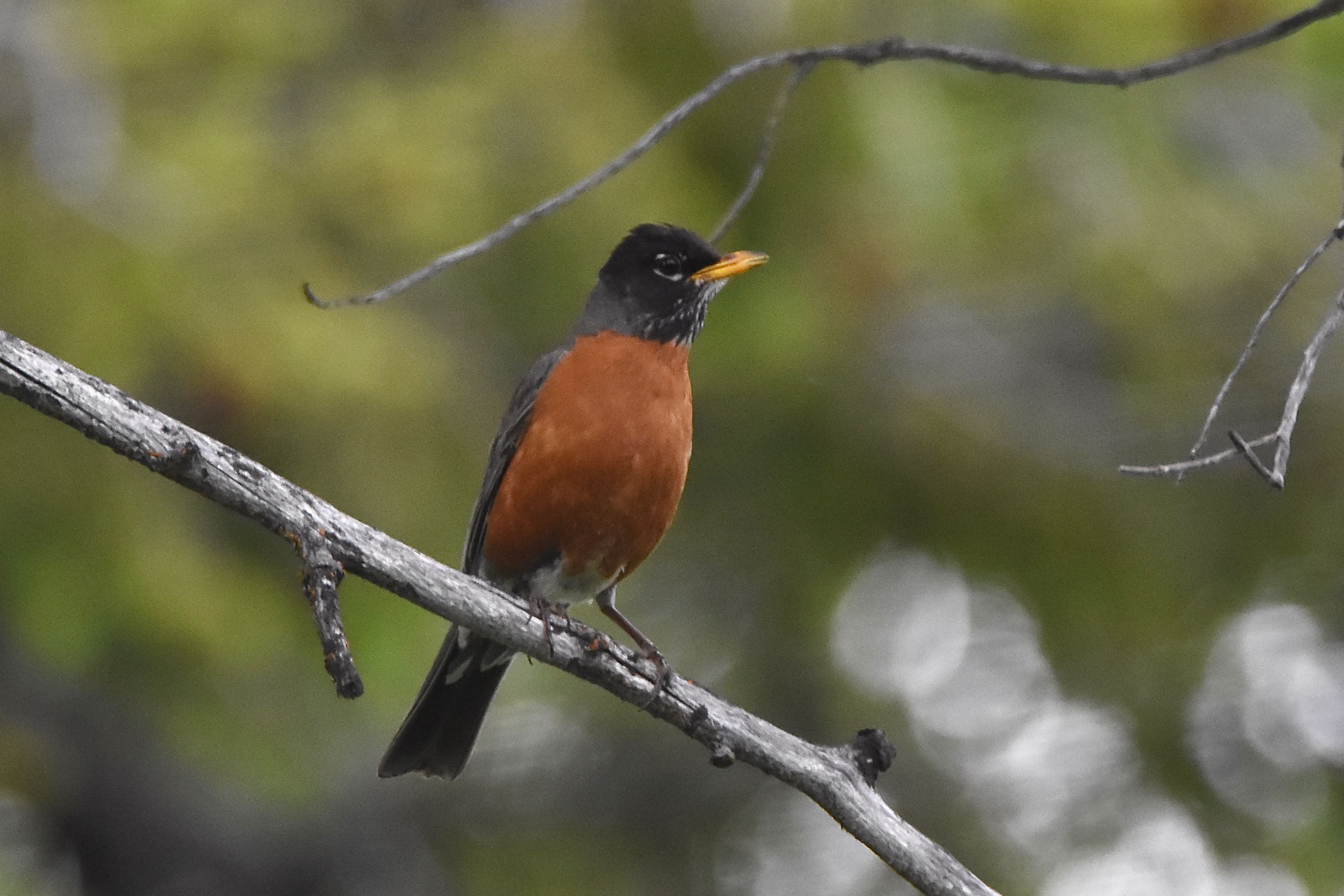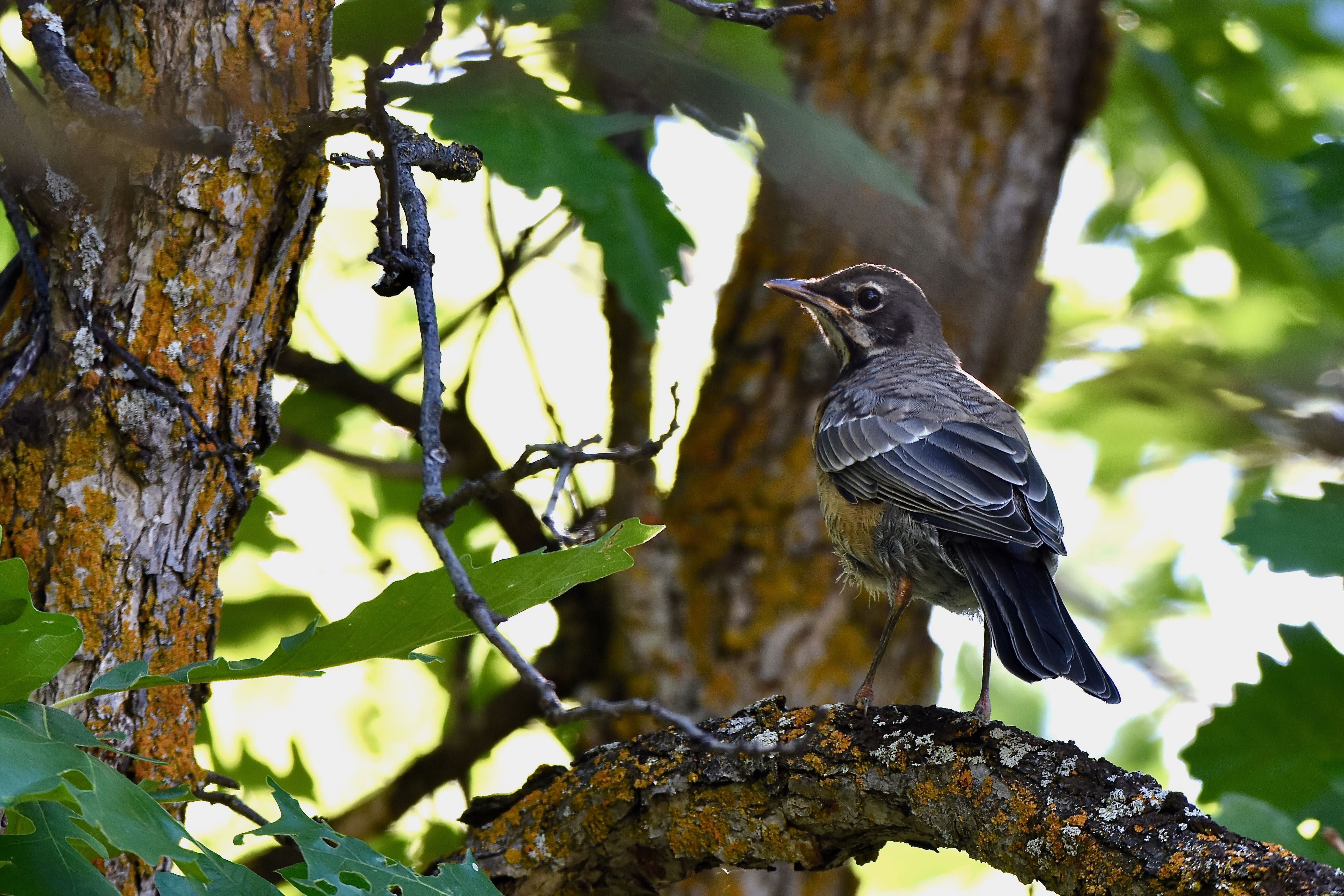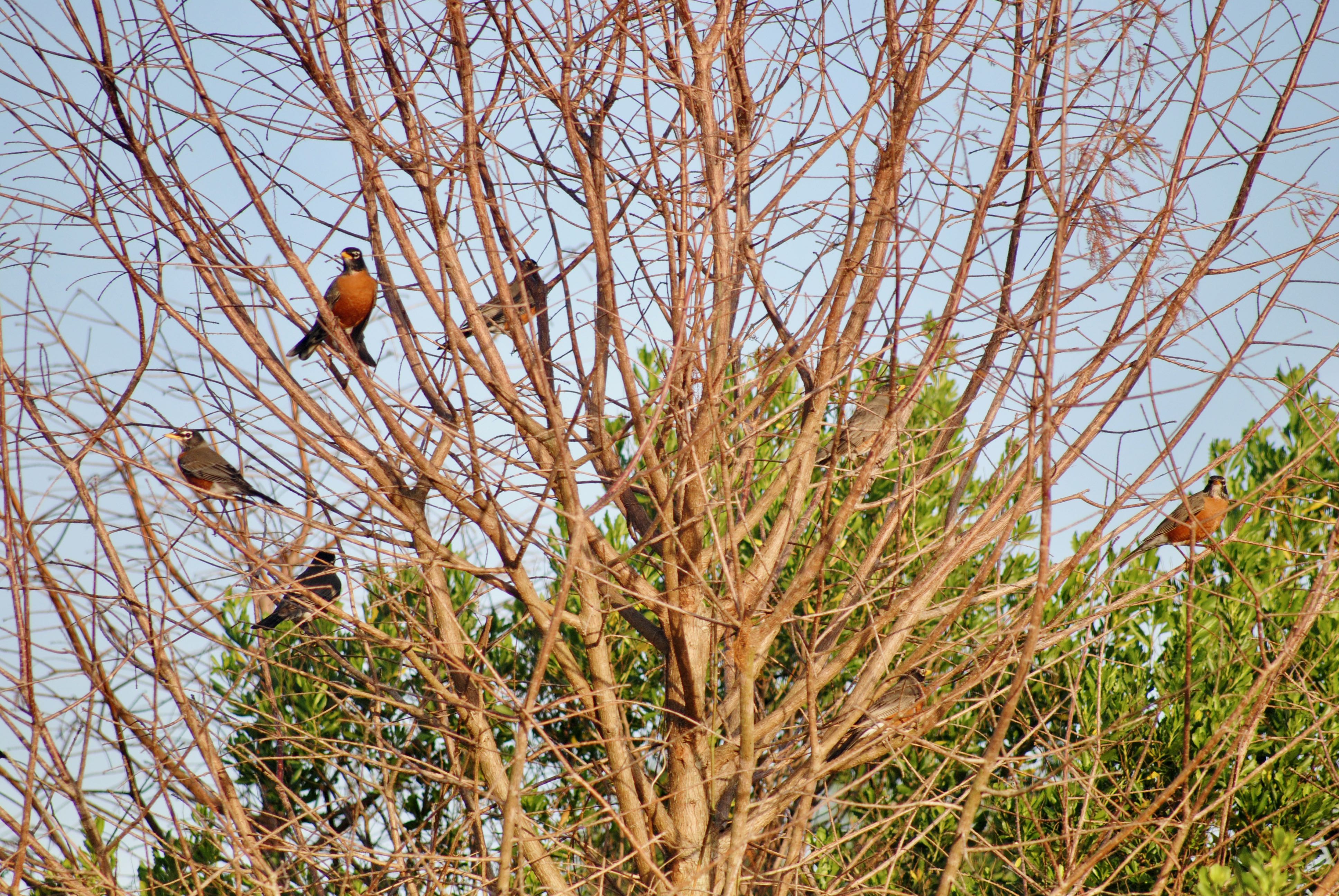
American robin, photographed at Green Cay Nature Center, Boynton Beach, Palm Beach County, in February 2013.
Robins, Turdus migratorius, are the quintessential early bird, and depending where you live, the first sign of spring. And yes, they do get the worm. Lots of them. It's a staple of their diet, in fact.
If you've lived most anywhere up north, robins are so common that they are part of the scenery during the spring and summer. They are a given. They're year-round residents in the extreme northern part of Florida, but here in the southern end of the Sunshine State, however, it's a different story.
We lived in South Florida for nearly 26 years before happening on a robin — in February 2013 when a large flock of them came to roost and feed on berries at Green Cay Nature Center in Boynton Beach. There were literally hundreds of robins throughout the preserve, as if on a single day they had made up for years of absense.
The explanation, in part at least, is robin behavior. Up north in the spring and summer, robins are territorial. Males declare their turf and defend it against other males. The population in a given area is stable. In the fall, however, rivalry fades and robins become social, gathering in huge flocks to prepare for the flight south. Once here, they stick together, and instead of being territorial, they stay in these nomadic bands to seek out food. Here today. Gone tomorrow. Literally.
Despite their reputation as a harbinger of spring, robins in most of the United States don't really migrate in the common meaning of the term. Only in the extreme northern portions of the country and in Canada do they head south to spend the winter. Robins do seemingly disappear from much of the country come cold weather, but what they're doing is the same phenomena we see here: birds concentrating in huge roaming flocks. They may have disappeared from their summer stomping grounds, but they may be only a few miles away. Robins' first-sign-of-spring reputation may come from individuals starting to break away from these groups and re-establish territories for the coming nesting season.
Robins are members of the thrush family, Turdidae, and are easily identified by their red-orange breast. They're large as song birds go, with a body length approaching a foot. Males tend to be a bit brighter than females; east coast robins more colorful than their west coast counterparts. They're found throughout North America to its northern-most reaches, southward to Mexico and parts of Central America, where they also spend the winter.
If you see an adult robin, you're looking at a creature that's survived some pretty long odds. A female robin will lay three to five eggs in a cup-like nest made of mud and grass and sticks.
She might produce as many as three broods a year. However, only 40 percent of nests produce young robins. Of those who survive to fledge, only a quarter will live long enough to see October turn into November.
According to the Cornell Laboratory of Ornithology, half the robin population dies within a year; the entire population turns over in six years. Individuals, however, can live 14 years with some luck.
Although robins are hardwired to migrate, even in northern portions of their range not all do so. Some, males more likely than females, will winter over in their summer breeding grounds. Males, if they do migrate, are less likely to make it this far south. Remember, they have territory to defend, while females need to build their bodies for breeding season. Where robins migrate also can vary; one year Texas, the next year, Florida. And vice versa.
Earthworms, as mentioned, are a staple of a robin's diet, but they also eat other bugs and lots of fruit. They tend to eat more worms in the morning, more fruit in the evening. They also eat other kinds of bugs and very occasionally small snakes and shrews. Yum.
Green Cay Nature Center
If you've lived most anywhere up north, robins are so common that they are part of the scenery during the spring and summer. They are a given. They're year-round residents in the extreme northern part of Florida, but here in the southern end of the Sunshine State, however, it's a different story.
We lived in South Florida for nearly 26 years before happening on a robin — in February 2013 when a large flock of them came to roost and feed on berries at Green Cay Nature Center in Boynton Beach. There were literally hundreds of robins throughout the preserve, as if on a single day they had made up for years of absense.
The explanation, in part at least, is robin behavior. Up north in the spring and summer, robins are territorial. Males declare their turf and defend it against other males. The population in a given area is stable. In the fall, however, rivalry fades and robins become social, gathering in huge flocks to prepare for the flight south. Once here, they stick together, and instead of being territorial, they stay in these nomadic bands to seek out food. Here today. Gone tomorrow. Literally.
Despite their reputation as a harbinger of spring, robins in most of the United States don't really migrate in the common meaning of the term. Only in the extreme northern portions of the country and in Canada do they head south to spend the winter. Robins do seemingly disappear from much of the country come cold weather, but what they're doing is the same phenomena we see here: birds concentrating in huge roaming flocks. They may have disappeared from their summer stomping grounds, but they may be only a few miles away. Robins' first-sign-of-spring reputation may come from individuals starting to break away from these groups and re-establish territories for the coming nesting season.
Robins are members of the thrush family, Turdidae, and are easily identified by their red-orange breast. They're large as song birds go, with a body length approaching a foot. Males tend to be a bit brighter than females; east coast robins more colorful than their west coast counterparts. They're found throughout North America to its northern-most reaches, southward to Mexico and parts of Central America, where they also spend the winter.
If you see an adult robin, you're looking at a creature that's survived some pretty long odds. A female robin will lay three to five eggs in a cup-like nest made of mud and grass and sticks.
She might produce as many as three broods a year. However, only 40 percent of nests produce young robins. Of those who survive to fledge, only a quarter will live long enough to see October turn into November.
According to the Cornell Laboratory of Ornithology, half the robin population dies within a year; the entire population turns over in six years. Individuals, however, can live 14 years with some luck.
Although robins are hardwired to migrate, even in northern portions of their range not all do so. Some, males more likely than females, will winter over in their summer breeding grounds. Males, if they do migrate, are less likely to make it this far south. Remember, they have territory to defend, while females need to build their bodies for breeding season. Where robins migrate also can vary; one year Texas, the next year, Florida. And vice versa.
Earthworms, as mentioned, are a staple of a robin's diet, but they also eat other bugs and lots of fruit. They tend to eat more worms in the morning, more fruit in the evening. They also eat other kinds of bugs and very occasionally small snakes and shrews. Yum.
Green Cay Nature Center



